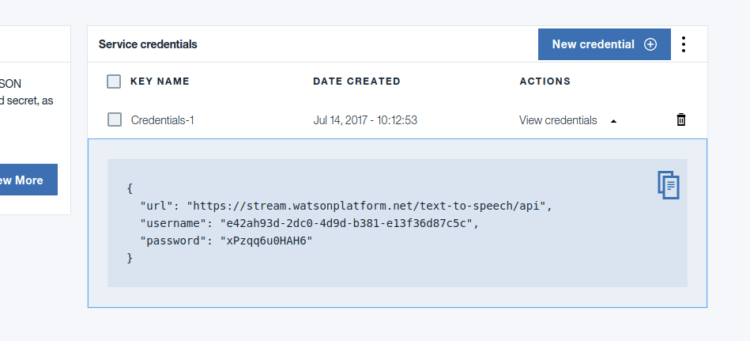Using The Dark and Light Theme in SUSI iOS
SUSI being an AI for interactive chat bots, provides answers to the users in the intelligent way. So, to make the SUSI iOS app more user friendly, the option of switching between themes was introduced. This also enables the user switch between themes based on the environment around. Any user can switch between the light and dark themes easily from the settings.
We start by declaring an enum called `theme` which contains two strings namely, dark and light.
enum theme: String {
case light
case dark
}
We can update the color scheme based on the theme selected very easily by checking the currently active theme and based on that check, we update the color scheme. To check the currently active theme, we define a variable in the `AppDelegate` which holds the value.
var activeTheme: String?
Below is the way the color scheme of the LoginViewController is set.
var activeTheme: String?func setupTheme() { let image = UIImage(named: ControllerConstants.susi)?.withRenderingMode(.alwaysTemplate) susiLogo.image = image susiLogo.tintColor = .white UIApplication.shared.statusBarStyle = .lightContent let activeTheme = AppDelegate().activeTheme if activeTheme == theme.light.rawValue { view.backgroundColor = UIColor.lightThemeBackground() } else if activeTheme == theme.dark.rawValue { view.backgroundColor = UIColor.darkThemeBackground() } }
Here, we first get the image and set the rendering mode to `alwaysTemplate` so that we can change the tint color of the image. Next, we assign the image to the `IBOutlet` and change the tint color to `white`. We also change the status bar style to `lightContent`. Next, we check the active theme and change the view’s background color accordingly. For this method to execute, we call it inside, `viewDidLoad` so that the theme loads up as the view loads.
Next, lets add this option of switching between themes inside the `SettingsViewController`. We add a cell with `titleLabel` as `Change Theme` and use the collectionView’s delegate method of `didSelect` to show an alert. This alert contains three options, Dark theme, Light Theme and Cancel. Let’s code that method which presents the alert.
func themeToggleAlert() {
let imageDialog = UIAlertController(title: ControllerConstants.toggleTheme, message: nil, preferredStyle: UIAlertControllerStyle.alert)
imageDialog.addAction(UIAlertAction(title: theme.dark.rawValue.capitalized, style: .default, handler: { (_: UIAlertAction!) in
imageDialog.dismiss(animated: true, completion: nil)
AppDelegate().activeTheme = theme.dark.rawValue
self.settingChanged(sender: self.imagePicker)
self.setupTheme()
}))
imageDialog.addAction(UIAlertAction(title: theme.light.rawValue.capitalized, style: .default, handler: { (_: UIAlertAction!) in
imageDialog.dismiss(animated: true, completion: nil)
AppDelegate().activeTheme = theme.light.rawValue
self.settingChanged(sender: self.imagePicker)
self.setupTheme()
}))
imageDialog.addAction(UIAlertAction(title: ControllerConstants.dialogCancelAction, style: .cancel, handler: { (_: UIAlertAction!) in
imageDialog.dismiss(animated: true, completion: nil)
}))
self.present(imageDialog, animated: true, completion: nil)
}
Here, we assign the alert view’s title and add 3 actions and their respective completion handlers. If we see inside these completion handlers, we can notice that we first dismiss the alert followed by updating the activeTheme variable in AppDelegate and call the `settingChanged` function which updates the user’s settings on the server. Finally, we update the color scheme.
Now, if we build and run the app and change the theme from the settings, we will notice that on returning to the chat view, the color scheme is not updated. The reason here is that we are setting up the theme on viewDidLoad which loads only once and is not executed until the controller is presented again. Here, we make use of the `viewDidAppear` method which executes every time the view appears.
override func viewDidAppear(_ animated: Bool) { super.viewDidAppear(animated) setupTheme() }
To persist the selected theme, we used the UserDefaults to save the theme which got assigned everytime to the `activeTheme` variable when the app loads up.
UserDefaults.standard.set(AppDelegate().activeTheme, forKey: ControllerConstants.UserDefaultsKeys.theme)
On app launch, we assigned this User Default the value of the light theme as a default.
Below is the final output:


References:
- Apple Docs(UserDefaults): docs by apple explaining the UserDefaults class
- Tutorial by AppCoda: tutorial on using UIAlertViewController
- Apple Docs(UIAlertViewController): explains usage of UIAlertViewController






 Prerequisites
Prerequisites
















You must be logged in to post a comment.